New Kingdom of Egypt: The Last of Three Golden Ages and the Most Glorious of Them All
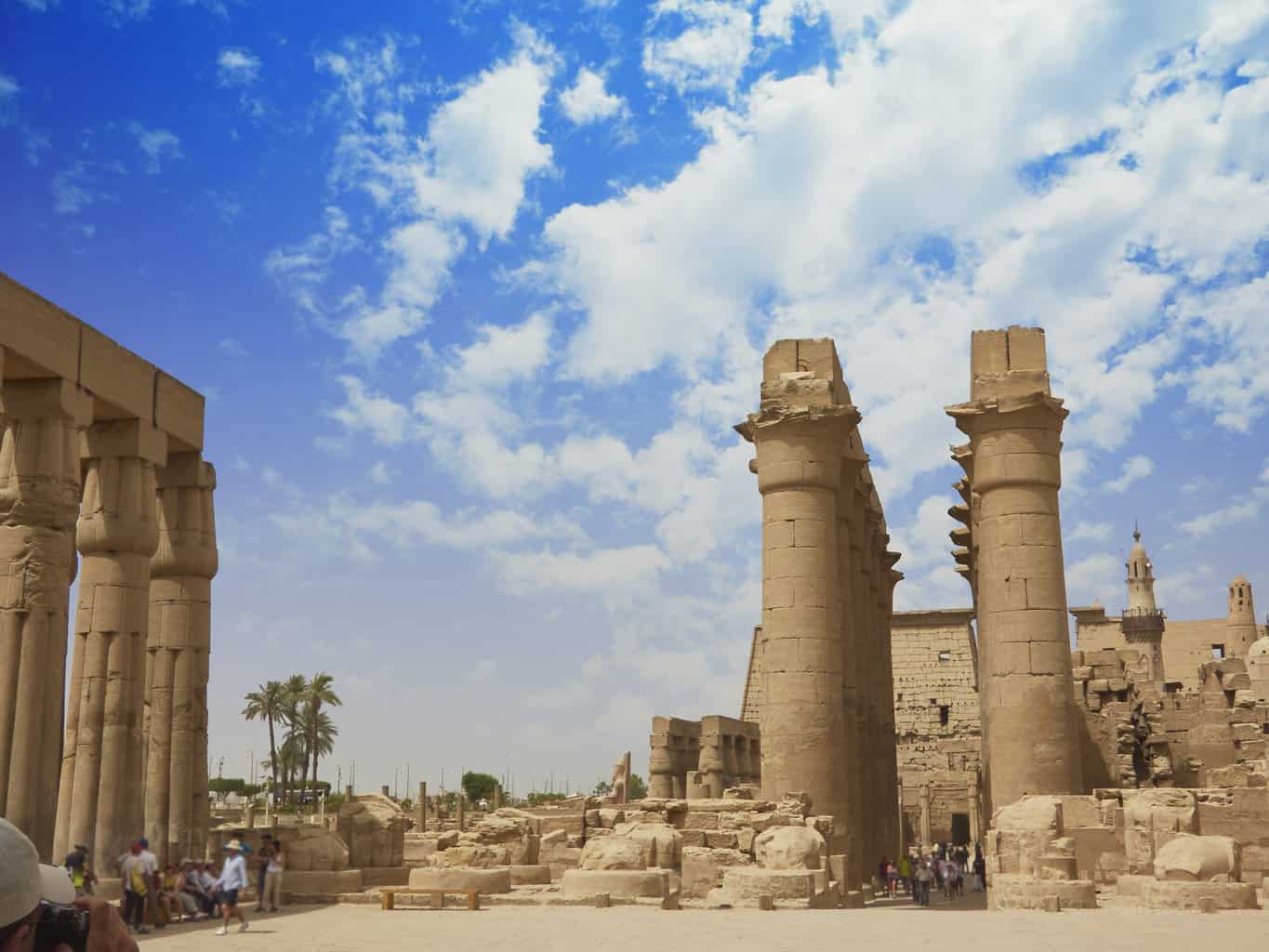
Updated On: February 19, 2024 by Noha Basiouny
Scholars marked the start of the ancient Egyptian civilisation with the year 3150 BC when Pharaoh Narmer unified the Lower and Upper Kingdoms of Egypt under one crown. This was precisely when the country started acting like one, with a king, cabinet, priests, people and plans. This was also when Egypt began witnessing obvious development in many aspects, most notably architecture.
The native rule of Egypt continued until 343 BC, excluding a period of 121 years from 525 to 404 BC, during which Egypt was under Persian invasion. Throughout these nearly three millennia, Egyptian civilisation was pretty much like a transverse wave of three peaks each of which was followed by a deep valley.
The valleys were periods of conflicts, instability and not that much progress or growth. The peaks, on the other hand, were the golden ages of ancient Egypt known as the Old, Middle and New Kingdoms. During these times, Egypt witnessed tremendous prosperity, development and expansion beyond its definitive borders and made outstanding achievements that still live to date.
Previously, we explored the Old and Middle Kingdoms, so today, we are going to look into the New Kingdom of Egypt, the last golden age and the most glorious of them all. So grab a cup of coffee, and let’s travel back in time.
The New Kingdom of Egypt
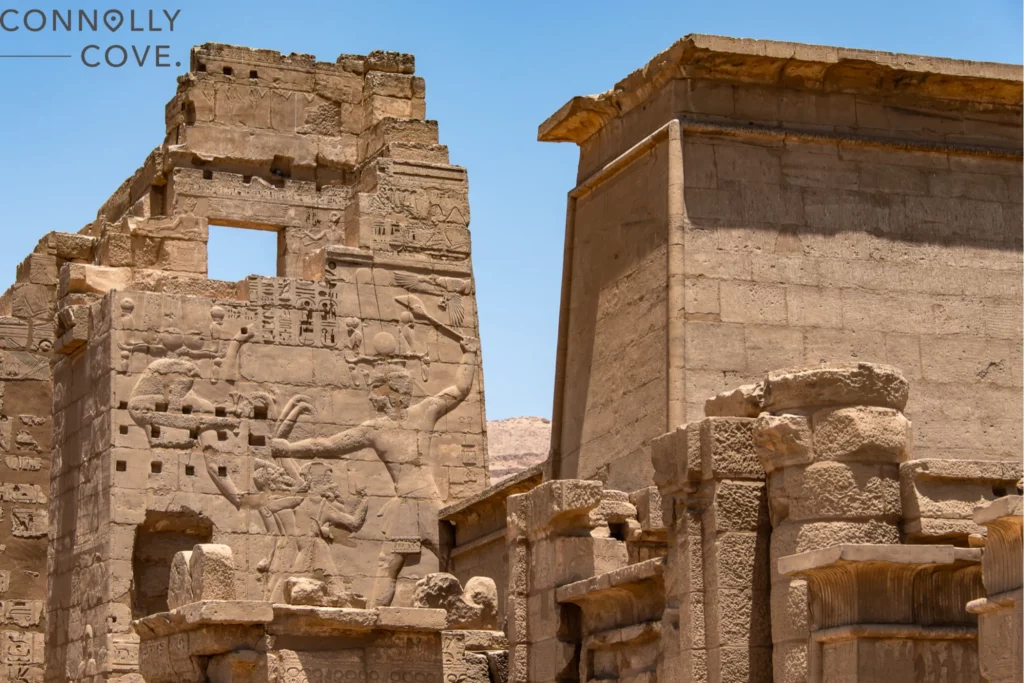
Stretching for almost half a century from 1550 to 1069 BC, the New Kingdom of Egypt comprised three dynasties.
It started off with the 18th Dynasty, which continued for over 258 years from 1550 to 1292 BC. The first Pharaoh was Ahmose, and the last was Horemheb, and between them, 11 other kings and one queen ruled. Some of those Pharaohs were among the most significant and influential ones in the entire history of ancient Egypt.
The 19th Dynasty was established by Pharaoh Ramesses I in 1292 BC and lasted 103 years, ending in 1189 BC. The third Pharaoh of the 19th Dynasty was whom many scholars consider the most powerful of all time. That is Ramesses II.
In total, the 19th Dynasty comprised seven Pharaohs. Some of them had short reigns, such as Pharaoh Ramesses I who ruled for only two years. Others ruled for so long, with Ramesses II’s reign becoming the longest with 66 years. He was actually the second longest-ruling Pharaoh, only out-reigned by King Pepi II from the sixth Dynasty, who is said to have ruled for 90 years!
Then the 20th Dynasty started in 1189 BC, continued for another 112 years and ended in 1077 BC. It is what we like to call the Dynasty of the Ramesseses as nine out of the 10 Pharaohs who ruled during it were named Ramesses. With the end of the 20th Dynasty, the Sun set over the New Kingdom and the last golden age of ancient Egypt.
To understand how significant this long period of the New Kingdom was, we actually need to step back a few decades and explore how Egypt was prior to it.
The Rise
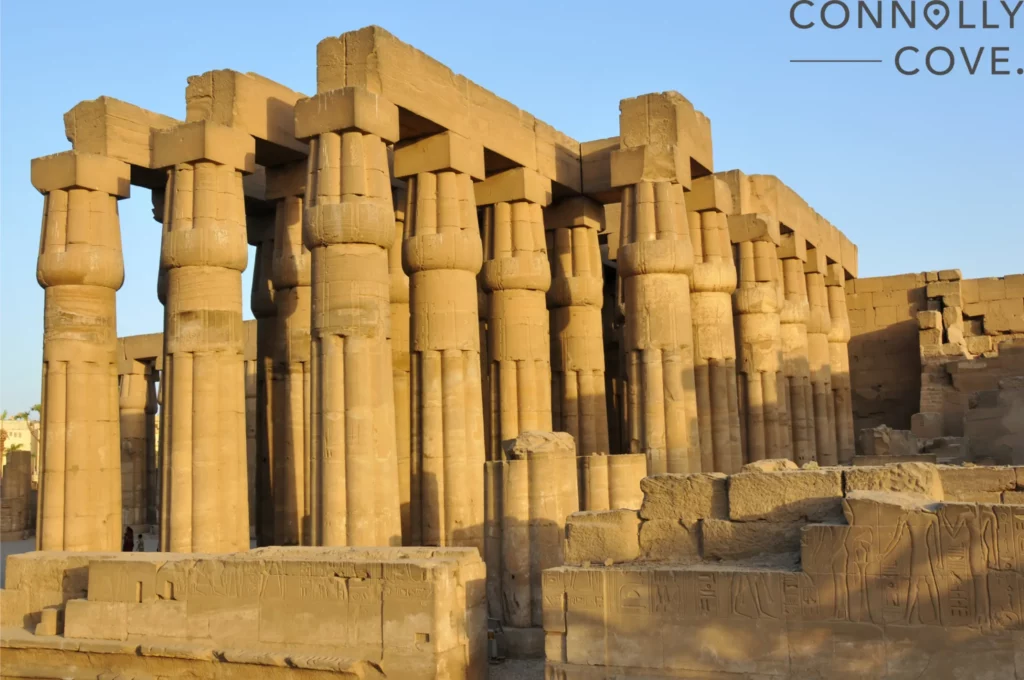
The period that preceded the New Kingdom of Egypt was called the Second Intermediate Period, which itself followed the Middle Kingdom, the second golden age.
Although the Middle Kingdom was, in itself, a long period of prosperity and development, it ended with ultimate chaos. The 13th Dynasty was the last to rule, and it was a time of complete disorder in the country. There were a lot of conflicts over succession, and power became the only thing thought about. Over 30 Pharaohs came to power; however, each’s reign was too short to allow them to make any proper development.
Gradually, the Pharaohs lost their grip over the entire country. This tempted the local rulers of many areas to seize power, which later led to internal fragmentation. It was also around this time when Egypt was hit by severe drought and famine, badly affecting crop production and worsening the economy.
Along with other factors, Egypt became prone to foreign invasions, the most known of which was made by Hyksos. Those were foreign invaders from the Levant in western Asia who conquered and took control of Lower Egypt in 1638 BC and established their own capital, Avaris, in the Nile Delta. As they ruled Lower Egypt, they formed the 15th Dynasty which lasted nearly a century.
Despite that, Upper Egypt was still under the control of the Pharaohs, and the next-in-line Dynasties, the 16th and 17th, continued to rule.
Then it was time for a new rise to the Egyptian state.
It was during the reign of the last Pharaoh of the 17th Dynasty, Kamose, that Upper Egypt started rebelling against Hyksos. When Kamose died, he was succeeded by his brother Ahmose who took it upon himself to expel Hyksos and reunite Lower and Upper Egypts into one kingdom again.
As he was a strong, fearless military leader, Ahmose led a huge military campaign up north, faced Hyksos, defeated them on the battlefield and expelled them from the country. He even marched to the Levant to stop them from ever coming back and reclaimed power over both Canaan and Nubia, both of which were former Egyptian territories.
Now that he united the country, retrieved native reign, established the 18th Dynasty and centralised his administration in Thebes, Ahmose rolled up his sleeves, rubbed his hands and decided to make Egypt great again.
For the next 25 years, Ahmose would become highly concerned with strengthening and expanding the military, building new forts to protect the country’s borders, and re-establishing the economy by reopening mines and stretching trade routes with other countries. Ahmose’s efforts would then pay off to develop Egypt and take it to a peak it had never witnessed before.
The Peak
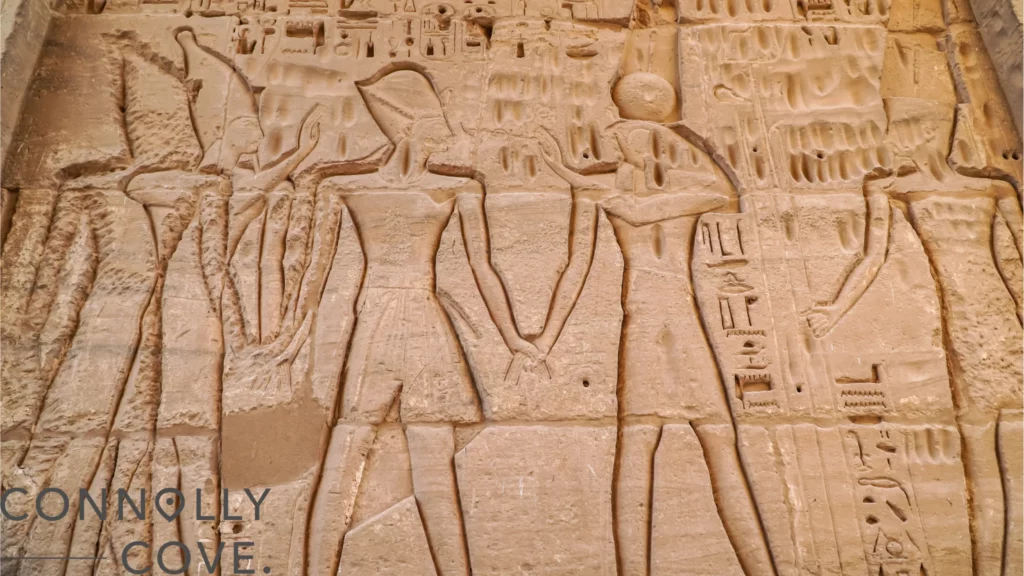
The uplift Ahmose caused in Egypt kind of paved the way for and encouraged the following kings and queens to follow suit and make even more remarkable achievements, and that is what happened. In fact, the New Kingdom of Egypt featured some of the most powerful and highly accomplished Pharaohs of all time.
While the development that happened in Egypt during that time would take volumes to cover, we can just boil them down to three different areas: military campaigns, architectural development and religious reforms.
So let’s go over some highlights of these areas.
Military Campaigns
For the most part, Egypt had already considered Nubia to be part of it, and most pharaohs campaigned there to make use of its resources and secure trade routes with other countries by keeping it under Egyptian control. So Amenhotep I, who was Ahmose’s son and successor, reclaimed Egyptian dominance over Nubia and secured Egypt’s southern borders.
Thutmose I, Amenhotep I’s successor, continued campaigning in Nubia but also went north-east toward the Levant and even went further away than Ahmose when he crossed the Euphrates River that runs through Iraq and pushed the Egyptian Empire’s border even further.
When Thutmose I died and during the transition of power to his son, Thutmose II, Nubians revolted so as to break free from Egyptian dominance. But the new Pharaoh, with the help of his father’s powerful army generals, sent a military to Nubia that suppressed the uprising and kept the country under Egyptian control.
That being said, the most magnificent military achievements were made by Pharaoh Thutmose III, the sixth to rule in the 18th Dynasty, who was later named by scholars Thutmose the Great and Napoleon of Egypt as he led at least 17 campaigns.
Thutmose III also focused on the Levant, conquered all of Syria and defeated the Mitanni Kingdom in the Battle of the Megiddo. He then imposed Egyptian dominance over that area stretching from Southern Anatolia in modern-day Turkey to the north of Syria and the trade routes that ran through it.
Seti I was the second King to rule during the 19th Dynasty and another great military leader. By the time he came to power, the Hittite Empire that preceded the Mitanni Kingdom and was also based in Anatolia had already invaded Syria, seized power over many Egyptian territories in the region and threatened the stability of Egypt.
So Seti I led an army and confronted the Hittites. He succeeded in defeating them, reclaiming Kadesh, a Syrian town that was under Egyptian control before the Hittites dominated it. Seti I could successfully loosen the grip of the Hittites until his son, Pharaoh Ramesses II, could ultimately destroy it.
Ramesses II was also a powerful military leader and considered by many scholars to be the greatest Pharaoh of all time. He reinforced the army, used new strategies and led a campaign toward Syria. He fought the Hittites in a severe battle in Kadesh, defeated them once and for all and signed a peace treaty with them, the first of its kind in history.
Pharaoh Ramesses III defeating the Sea People was another military highlight of the New Kingdom. Though their identity has never been confirmed, many scholars believe the Sea People were violent groups of seafarers who may have come from the Aegean Sea and Anatolia. Yes, Anatolia, again!
The Sea People attacked many Mediterranean nations, including Cyprus, Egypt and Syria and brought an end to the Hittite Empire. Rameses III was able to defeat them in several battles and built forts along the Egyptian north coast to deflect any future attacks from their side.
Architectural Development
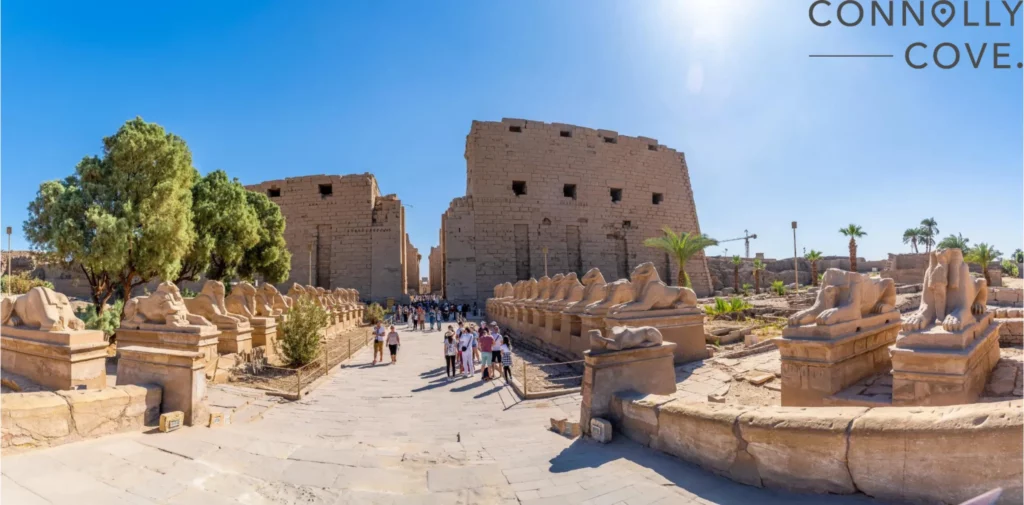
The New Kingdom of Egypt also witnessed a substantial development in architecture. As many Pharaohs vowed to immortalise themselves, they built mortuary temples, obelisks, walls, shrines, and chapels, decorating them with scenes from their lives and documenting their great achievements on them so that future generations could know about and remember them.
One of the most remarkable monuments, for instance, was the Great Hypostyle Hall which King Seti I built inside the Karnak Temple Complex, whose construction had already started half a millennia earlier. On the columns that made up the Hall, scenes from the King’s wars with the Hittites and his other military campaigns were depicted.
Ramesses II built the colossal Temple of Abu Simbel in Aswan and the Ramesseum, his very own mortuary temple, both of which are terrific architectural masterpieces. The mighty Queen Hatshepsut, who served as the fifth Pharaoh of the 18th Dynasty, built the magnificent Mortuary Temple of Hatshepsut in Deir el-Bahari and the Red Chapel at Karnak Temple, as well as two super giant obelisks carved from pink granite, one of which is still standing to date at Karnak.
It was also during the New Kingdom when the Pharaohs decided to transform their burial traditions. Instead of building pyramids, they dug tombs deep in the mountains and finely concealed their entrances so they could not be reached. The new royal cemetery was allocated two different sites on the west bank of the Nile that were later called the Valley of the Kings and the Valley of the Queens.
The brilliance and cleverness of ancient Egyptians could be seen in the structure and design of these royal tombs. It was not only how large the tombs were that made them spectacular, but also how long and deep in the mountain they were built and how beautifully they were decorated.
Some of the most impressive tombs in these two Valleys include King Seti I’s, that of Queen Nefertari, the royal and beloved wife of King Ramesses II, and, without doubt, the 1922-discovered tomb of King Tutankhamun before which the world has still been standing awe.
Religious Revolt
Another of the most interesting characteristics of the New Kingdom of Egypt is the religious revolt led by Pharaoh Amenhotep IV, the 10th Pharaoh of the 18th Dynasty, who later called himself Akhenaten and has been known by this name ever since. You may think of Akhenaten as a religious reformer or a preacher, thanks to the shifts in the Egyptian religious beliefs he made during his reign.
In essence, the ancient Egyptian religion was built upon polytheism. Ancient Egyptians believed in many deities, each of whom had different traits, took charge of a different aspect of life and was represented by a different animal.
Some of the most famous deities were Isis, the goddess of healing and magic, her husband, Osiris, the god of fertility, the afterlife and the dead and their son, Horus, the god of the sky and war. Seth was the god of violence and disorder, Anubis was the god of funerals and the guide to the underworld and Ma’at was the goddess of mortality, balance and justice.
Ra was the Sun god and the one thought to be the creator of the world. While Amun used to be the god of air, his role actually evolved throughout history until he was widely worshipped as the king of all deities. During the New Kingdom, both the Sun and the air combined and became Amun-Ra, the chief god of all deities there were.
This continued to be the case until Amenhotep IV became King. He clearly did not accept polytheism and instead believed there was only one god who created the Universe. So he ditched the ancient Egyptian religion, symbolised the one and only god by the Sun disc and named him Aten, changed his name to Akhenaten, started preaching the new religion, Atenism, and closed all the Amun-Ra temples.
Unfortunately, Akhenaten’s new religion was met with pushback from the priests as it imposed a huge threat to their power and authority as intermediaries between the gods and the people and to their administration of the temples, and that, let me tell you, was a pretty big deal.
The thing is, temples as religious institutions were under the management of the priests, who controlled the income the temples received, best represented by donations from the people who sought pacifying and pleasing the gods, large amounts of money given to by the government for maintenance, renovation and expansion and the rents from the temples’ lands. Rejecting Amun-Ra and closing the temples meant the priests became unemployed overnight and were denied both the fortune and the status.
Akhenaton was able to tighten his grip and impose the new religion. However, after his death and the transition of power to his then-nine-year-old son, Tutankhamun, the priests were freed from their former King’s obligations. So they quickly wiped away Akhenaten’s religion like it never existed and brought back the cult of Amun-Ra as well as their authority.
The Downfall
Kingdoms are more like diabetes than they are like heart attacks. They do not collapse all of a sudden but rather over a prolonged period of time.
The end of the New Kingdom already started early in the 20th Dynasty, almost a century before the Kingdom was scheduled to fall, as conflicts between the Pharaohs and the priests began to emerge.
The priests grew powerful, and their authority increased over time. They controlled more land and eventually took over the finances of the entire country. On the other hand, power transitions happened often, which resulted in political instability. Each of the many Pharaohs who ruled stayed in power for just a few years, which did not give them much of a chance to make any considerable achievements.
These conflicts minimised the military activities, which certainly needed funds. Egypt lost most of its foreign territories in Asia and, along with them, the resources they provided and the trade routes they secured. As a result, the financial situation worsened and the army was weakened, which made Egypt prone to foreign threats.
The last Pharaoh of the 20th Dynasty was Ramesses XI, whose power was limited to Lower Egypt by the priests of Amun-Ra as a result of their taking control of Upper Egypt. Once again, the country was fragmented, and the New Kingdom, the last golden age, came to an end.






